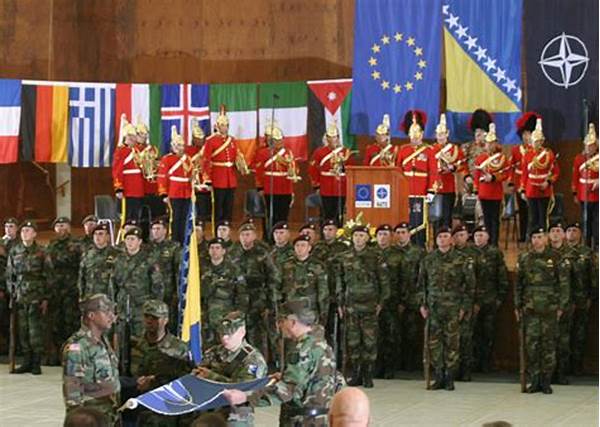The Role and Objectives of NATO-Led Stabilization Missions
NATO-led stabilization missions have long been instrumental in maintaining international peace and security. These missions are undertaken with clear objectives to stabilize regions affected by conflict, restore governance, and ensure the protection of civilians. The commitment of NATO member countries to these missions signifies their shared responsibility towards global security. By deploying troops, delivering humanitarian aid, and facilitating political processes, NATO aims to create a safe environment for reconstruction and development. The multifaceted nature of these missions involves not only military interventions but also diplomatic and humanitarian efforts. As part of their mandate, NATO-led stabilization missions often collaborate with local governments and international organizations to ensure a comprehensive approach to peacebuilding.
Over the years, NATO-led stabilization missions have adapted to the changing dynamics of global conflicts. Recognizing the complexities of modern warfare, these missions incorporate advanced strategies to counter emerging threats. The integration of intelligence, surveillance, and reconnaissance (ISR) capabilities plays a crucial role in the effective execution of these missions. Additionally, the emphasis on respecting human rights and the rule of law underscores NATO’s commitment to ethically guided interventions. This holistic strategy ensures that stabilization efforts are sustainable and beneficial to affected communities in the long term.
The success of NATO-led stabilization missions is often measured by the restoration of stability and the establishment of legitimate governance structures in post-conflict regions. While challenges remain, the continued evolution of these missions reflects NATO’s dedication to adapting to new security challenges. By fostering international cooperation and leveraging collective resources, NATO-led stabilization missions strive to create a safer and more stable world.
Key Components of NATO-Led Stabilization Missions
1. Strategic Deployment: NATO-led stabilization missions involve the strategic deployment of military personnel to conflict zones, ensuring a rapid response to emerging crises.
2. Humanitarian Assistance: These missions include delivering vital humanitarian aid, addressing immediate needs such as food, shelter, and medical care.
3. Civil-Military Coordination: Effective coordination between military forces and civilian organizations is crucial in achieving the mission’s objectives.
4. Security Sector Reform: A focus on reforming local security institutions to ensure sustainable peace is a critical aspect of NATO-led stabilization missions.
5. Rule of Law Initiatives: Promoting governance and adherence to the rule of law is essential for long-term stabilization and peacekeeping efforts.
Evolving Challenges in NATO-Led Stabilization Missions
In an era marked by rapid technological advancements and complex geopolitical landscapes, NATO-led stabilization missions face evolving challenges. The increasing use of cyber warfare and asymmetric threats necessitates a robust adaptation of strategies. These missions must integrate technological innovations to counter threats efficiently. Ensuring the protection of civilian lives amidst these challenges remains a priority, reflecting NATO’s comprehensive approach to security.
Furthermore, NATO-led stabilization missions now require a profound understanding of regional dynamics and cultural nuances. Engaging with local communities and leaders fosters trust and facilitates conflict resolution efforts. Building enduring peace requires not only military intervention but also social and economic rehabilitation. The involvement of qualified experts in various disciplines enhances the mission’s overall effectiveness.
Ultimately, the complexity and magnitude of contemporary conflicts demand a multi-pronged approach. As NATO continues to refine its strategies, the emphasis on inclusivity, coordination, and collaboration will define the success of future NATO-led stabilization missions. Constant evaluation and reassessment ensure these missions align with evolving global security demands.
Outcomes and Impacts of NATO-Led Stabilization Missions
1. Stability Restoration: A primary outcome of NATO-led stabilization missions is restoring stability in conflict-ridden areas, allowing for rebuilding initiatives.
2. Governance Establishment: These missions contribute to the establishment of governance structures, supporting the development of democratic institutions.
3. Humanitarian Relief: Through timely intervention, NATO-led stabilization missions provide essential humanitarian relief to affected populations, saving lives.
4. Norms and Standards Promotion: By promoting international norms and standards, these missions reinforce the rule of law and respect for human rights.
5. Community Engagement: Engaging local communities fosters cooperation, reducing the likelihood of future conflicts and aiding in sustainable peace efforts.
6. Infrastructure Development: Essential infrastructure repairs and development bolster economic recovery and create jobs, contributing to long-term peace.
7. Security Enhancement: The reformation of local security forces is crucial, enhancing the capability to maintain law and order independently.
8. Collaborative Efforts: Collaboration with international organizations ensures a comprehensive strategy, pooling resources and expertise for better outcomes.
9. Conflict Resolution Mechanisms: Establishing mechanisms for conflict resolution and dialogue is vital, facilitating peaceful negotiations and settlements.
10. Resilience Building: Equipping communities with the necessary tools and knowledge builds resilience, empowering them to manage future challenges autonomously.
Multilateral Approach in NATO-Led Stabilization Missions
NATO-led stabilization missions emphasize a multilateral approach, involving collaboration with various international and regional entities. This approach strengthens the mission’s effectiveness, allowing for optimal resource allocation and utilization. By integrating diverse perspectives from member and partner countries, NATO ensures that stabilization efforts reflect a collective and distinctly international perspective, enhancing the legitimacy of operations.
The involvement of international agencies, such as the United Nations and the European Union, reinforces the legal and moral framework for these missions. Cooperative engagement with non-governmental organizations (NGOs) and civil society groups enhances the reach and impact of peacebuilding efforts. Through such partnerships, NATO-led stabilization missions address varied dimensions of conflict, from emergency response to long-term economic development.
Additionally, these missions advocate for capacity-building initiatives, training local forces to assume responsibility for maintaining order post-intervention. The strategic alignment with local and international security actors fosters trust and collaboration, essential for effective peacekeeping. By continuously refining and adapting multilateral strategies, NATO-led stabilization missions remain critical to securing a stable and peaceful international order.
Financing and Resources for NATO-Led Stabilization Missions
The funding and resources allocated for NATO-led stabilization missions are crucial for ensuring successful outcomes. Member states contribute financially and materially to support these efforts, reflecting their commitment to shared global security responsibilities. The budget encompasses various needs, from logistical support to personnel training and technological advancements, ensuring that mission objectives are met efficiently.
Resource allocation is strategically planned, prioritizing urgent humanitarian needs and security operations. Proper management of resources is imperative, as it determines the mission’s ability to respond promptly to changing on-ground realities. The sustainability of NATO-led stabilization missions relies on efficient resource use, minimizing wastage and maximizing impact.
Moreover, leveraging modern technology and intelligence resources enhances operational capabilities, allowing precise strategy execution. The use of cutting-edge communications and surveillance tools ensures situational awareness, guiding mission decisions effectively. Continual investment in innovation and infrastructure is vital, enabling NATO-led stabilization missions to adapt to evolving challenges and secure lasting peace.
Conclusion: The Future of NATO-Led Stabilization Missions
In summary, NATO-led stabilization missions have demonstrated significant achievements in restoring peace, stability, and governance across different regions. Their success is underscored by a comprehensive approach that integrates military, humanitarian, and developmental efforts. As NATO adapts to new global security challenges, these missions remain a critical pillar of international peacekeeping and conflict resolution.
The trajectory of NATO-led stabilization missions is set towards continuous evolution, embracing technological progress and strategic partnerships. Understanding the complexities of modern conflicts, these missions are likely to incorporate more inclusive approaches, focusing on building resilient communities and sustainable peace. Further development in multilateral cooperation and resource mobilization will bolster their effectiveness, extending their impact well into the future.
Through proactive engagement, strategic innovation, and collaborative problem-solving, NATO-led stabilization missions will continue to contribute to global peace, reflecting the alliance’s unwavering commitment to international security. As these missions evolve, they will need to address emerging challenges with foresight, adaptability, and a firm dedication to promoting peace and stability worldwide.





